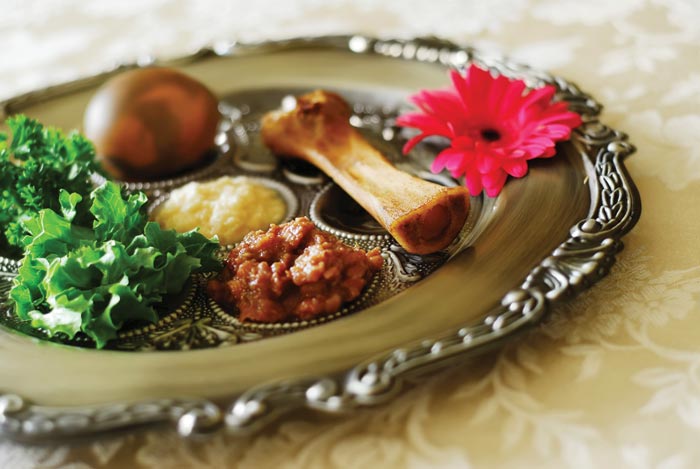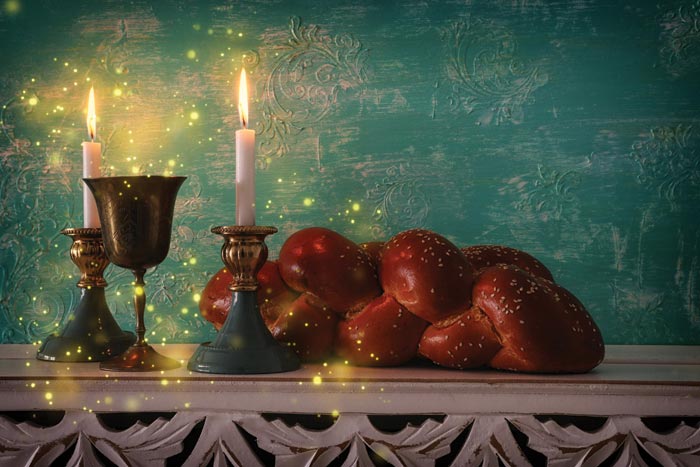Musician Eric Stein felt disillusioned with rock ‘n’ roll. He spent years slogging away in a band without “making it,” so he started looking for something else.
He considered being a history professor, but then, a new instrument and an old style of music changed his mind.
The instrument was a mandolin and the music klezmer.
“There was level of musical sophistication that goes with the kind of music you can play on the mandolin, and my intention was to start a new acoustic-fusion thing, with an emphasis on string and wind instruments,” said Stein, who went on to form Beyond the Pale, a klezmer-fusion band.
“I had been brought up as a secular Jew, and I didn’t know much about Jewish music except that it was dorky,” said Stein on the phone from Toronto, where his band is based. “But when klezmer got hot a few years ago, I found that the music really spoke to me on a cultural level. All the time, I was trying to play other people’s music, but this is the music of my family and my history.”
Stein’s approach to klezmer — seeing it as part of his heritage, but wanting to put an innovative, modern stamp on it, is typical of today’s klezmer revival. More and more musicians are attracted to the music, but want to move it beyond its European folk roots.
Hence, bands like Beyond the Pale fuse klezmer with reggae, jazz, ska and bluegrass music. As a result, klezmer keeps one foot in its shtetl past and another in the post-modern present.
“That’s why we called the band Beyond the Pale, because the expression means something that is unexpected and beyond the bounds,” Stein said. “[The name] refers to the Jewish roots of the band, but it also refers to the idea that we want to get outside of the rules — to pay homage to the traditions, but at the same time express ourselves.”
“Consensus” is the name of Beyond the Pale’s new CD, but while the title implies harmonic accord, even compromise, the tunes on the CD do not. Although not disharmonious, the tunes startle the listener with their complex boldness.
In “Whassat,” for instance, the 10th song on the CD, a clarinet melody starts off plaintive and wailing, only to be overlaid by a thumping base beat that builds into a rhythmic crescendo that is less “Tevye” and more jazz club.
In “Skalavaye,” Beyond the Pale gives a modern, ska-tinged rendition of a 1940s Yiddish classic, with contemporary nods to Yiddish humor. “Halevai (I only wish that) I was a keg of beer,” warbles vocalist Josh Dolgin. “So you could quench your thirst with me, my dear'”
For Stein, the CD, a live recording of a Toronto concert, epitomizes the new direction of klezmer.
“Historically, klezmer music was just about extinct by the mid-60s, for all sorts of different reasons, such as demographics and the Holocaust,” Stein said. “So for the first 15 to 20 years of the klezmer revival, [which started in the 1970s], the overriding influence was about ‘Let’s rescue what was forgotten and bring it back.’ But in the 1990s, we have the second generation of the klezmer revival, and that is when things really started to evolve. [The musicians] were marrying klezmer to jazz, rock ‘n’ roll, funk and reggae.”
Klezmer was not only becoming musically assimilated, but moving beyond the confines of the Jewish community. Stein is the only member of his five-piece band who is Jewish, and the band’s audiences have also changed.
No longer do klezmer bands attract only the bubbes and zaydes who remember the music from the old days. Now, in many venues, klezmer audiences can be primarily non-Jewish.
“People from within the Jewish community are embracing it, and using it as a way to express their own cultural heritage, but it is also having a life outside of the Jewish community altogether,” said Martin Van de Ven, Beyond the Pale’s clarinetist. “It has become [a style of music] with its own direction and way of doing things. More and more musicians are getting involved with it….”
“It is really evolving beyond just a Jewish form of music,” he said.
Beyond the Pale will perform June 1 at 9:30 p.m. at Tangier Restaurant, 2138 Hillcrest Ave., Los Angeles; (323) 666-8666. For more information on the band, visit
Did you enjoy this article?
You'll love our roundtable.
Editor's Picks



What Ever Happened to the LA Times?

Who Are the Jews On Joe Biden’s Cabinet?


No Labels: The Group Fighting for the Political Center
Latest Articles

Sitting With Rebels

Rosner’s Domain | We Intercepted, We Exaggerated …

Why I’m Adding a Flower to the Seder Plate This Year


Day 188: How Could This Pesach Be Celebrated with Joy?











 More news and opinions than at a Shabbat dinner, right in your inbox.
More news and opinions than at a Shabbat dinner, right in your inbox.